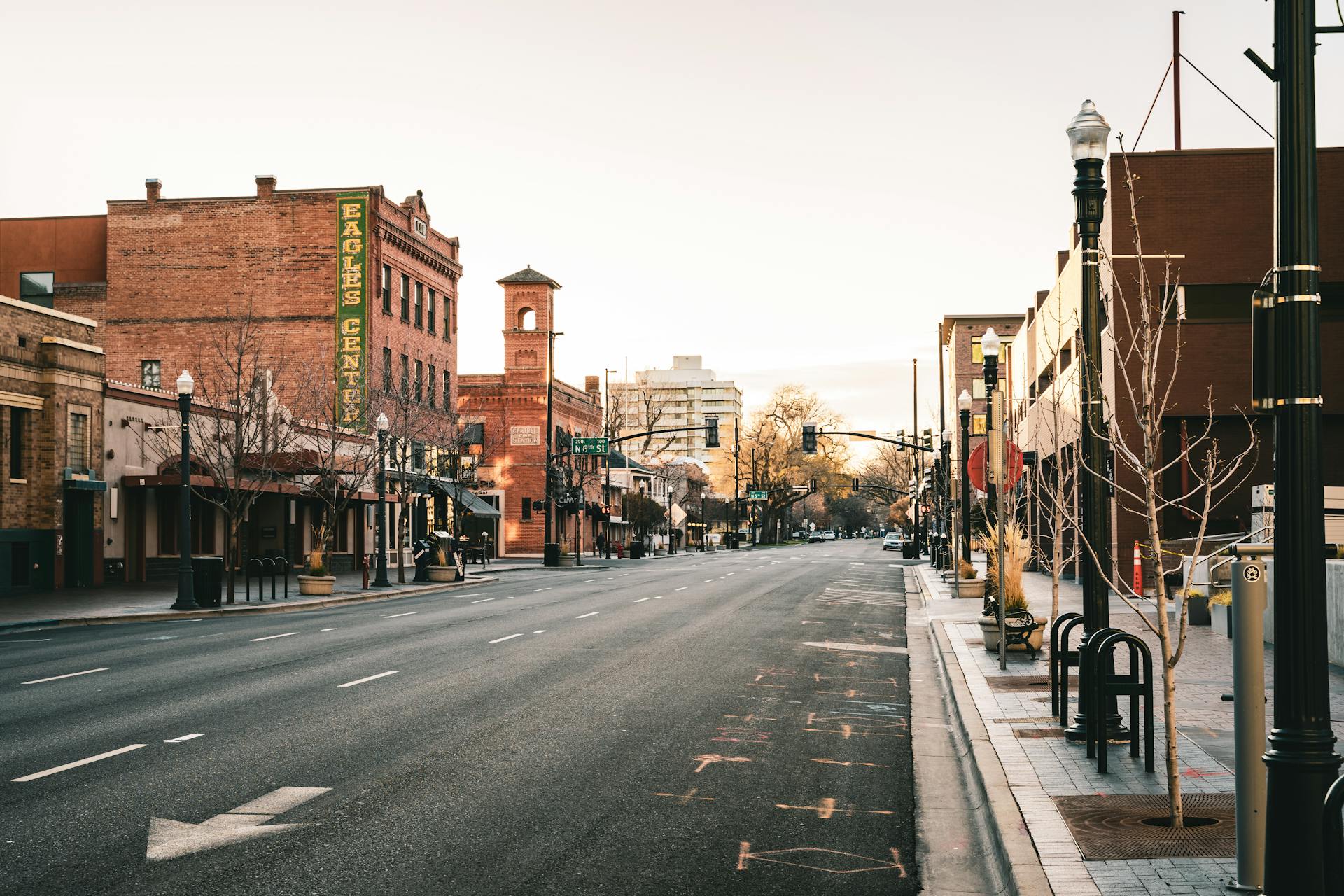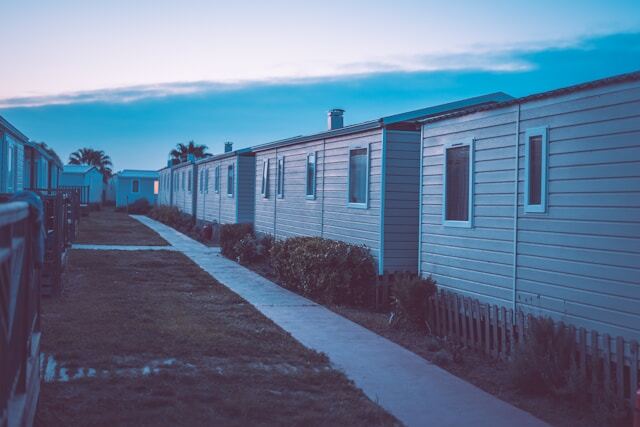Diversifying Your Retail Portfolio: Comparing 3 Shopping Center Types
February 7th, 2025
5 min read

Shopping centers fall into three main categories: enclosed malls, power centers, and neighborhood centers. Each type varies in size, layout, and tenant mix, which affects performance, risk, and overall investment strategy.
The words “mall” or “shopping center” evoke different images for different shoppers. Some will imagine the local shopping mall they used to hang out in during the 90s.

The words “mall” or “shopping center” evoke different images for different shoppers. Some will imagine the local shopping mall they used to hang out in during the 90s.
Others will imagine the strip mall with the Macy’s they always shop at, and someone else will imagine the neighborhood center with the CVS, where they get their family’s prescriptions filled.
All of these are correct depictions of shopping centers. This category has much variety, as each customer base has different needs and expectations from the shopping centers they frequent. Each type of center has specific advantages, from enclosed malls to neighborhood centers. The differences between them are determined by size, location, and layout.
For investors, these differences matter, and learning the right vocabulary means knowing the difference between a good investment and a risky one.
This article will examine these retail formats in depth, highlighting their defining characteristics, operational distinctions, and roles within the broader retail ecosystem.
3 Main Varieties of Malls and Shopping Centers
1. Enclosed Malls: Large-Scale Retail Environments
%20(1).jpg?width=840&height=560&name=pexels-burst-374894%20(1)%20(1).jpg)
Imagine a world where shopping, dining, and entertainment converge under one roof. Welcome to the enclosed mall! Fundamentally, enclosed malls are significant retail developments characterized by their expansive size and indoor layout.
Key attributes:
- Scale: Typically ranges from 300,000 to over 1,000,000 square feet
- Land Utilization: Occupy substantial parcels, often 30 to 100 acres
- Structural Design: Fully enclosed, climate-controlled environments
- Tenant Configuration: Anchored by major department stores, complemented by numerous smaller retailers
Enclosed malls are the quintessential shopping destinations that have defined American retail for decades. They are distinguished by their inward-facing layouts, where retail spaces primarily open onto interior corridors. This design creates a controlled shopping environment insulated from weather conditions and benefits extended visitor engagement.
The tenant mix in enclosed malls is strategically curated. Major anchor tenants, such as department stores (e.g., Macy's, JCPenney, Dillard's), occupy positions around the mall's perimeter. These anchor stores serve as primary customer draws and provide directional orientation. Their massive footprints serve as compass points in this retail ecosystem.
Department stores are not the only appeal of enclosed malls. Lining the walkways are many smaller specialty stores, each a treasure chest to be explored. These stores create a tapestry of experiences, from fashion boutiques to gift shops.
Enclosed malls often incorporate amenities like food courts, sit-down restaurants, entertainment venues, and common areas. These features contribute to the mall's function as a multi-purpose destination. These spaces offer an escape from the mundane. Enclosed malls invite visitors to lose themselves in a day of retail therapy, entertainment, and food.
Why This Matters to Investors: While some might view enclosed malls as a relic of the past, they can be an incredible financial opportunity for certain investors with specific needs. Enclosed malls offer more amenities and act as temperature-controlled one-stop shops in a culture where access and variety are highly valued.
When investing in a closed mall, investors should ensure that the location is a high-traffic area, features at least a couple of anchor tenants, and boasts a diversity of local retailers and specialty stores.
2. Power Centers: Open-Air Retail Clusters
.jpg?width=840&height=560&name=pexels-curtis-adams-1694007-8584022%20(1).jpg)
Power centers represent a distinct retail format, characterized by their open-air layout and focus on larger-format stores.
Key Attributes:
- Scale: Typically spans 150,000 to 200,000 square feet
- Structural Design: Open-air format with outward-facing storefronts
- Tenant Composition: Anchored by multiple "junior box" retailers, supplemented by smaller establishments
Power centers are named for their ability to assemble major retailers in one location. This creates a powerful draw for consumers. Stores like TJ Maxx and Kohl's occupy 20,000 to 30,000 square feet and offer products at competitive prices. These stores serve as the center's primary consumer attractions.
TJ Maxx, Best Buy, Kohl's, and other “junior box stores” anchor these centers and serve as their primary consumer attractions. Power centers occupy anywhere from 20,000 to 30,000 square feet and offer a treasure trove of products at competitive prices.
Power centers usually include a selection of smaller retailers and dining establishments along the perimeter or in standalone buildings within the complex. This clever layout creates a symbiotic relationship. The junior boxes draw in the crowds, while smaller establishments offer variety and convenience.
The structure of power centers caters to the specific needs of their target shopper. Stores face outward, allowing direct access from the parking area.
This configuration facilitates convenience and efficiency for consumers who prefer targeted shopping experiences. Power centers offer a no-nonsense approach to retail. They appeal to shoppers who know what they want and appreciate one-stop shopping.
Why This Matters to Investors: Power centers, while featuring large-name tenants like enclosed malls, serve a different need in their community.
The open structure serves shoppers who desire quick access to big retailers or department stores without going through an enclosed mall. If you invest in a power center, ensure the area has a large parking capacity and several anchor stores, including grocery and retail options. These factors often determine whether a power center will succeed or fail.
3. Neighborhood Centers: Community-Focused Retail Hubs

Last but certainly not least, the third category is neighborhood centers. These areas represent smaller-scale retail developments designed to serve the immediate local community.
Key Attributes:
- Scale: Generally under 150,000 square feet
- Location: Typically situated within residential areas
- Focus: Emphasis on convenience and daily necessities
These smaller-scale retail hubs offer everyday essentials and local flavors that showcase an area's offerings.
These centers often feature a mix of national chains and local businesses. While you might spot some familiar names, the atmosphere is decidedly more local. It's common to find a family-owned hardware store next to a national pharmacy chain or a local bakery sharing a wall with a well-known sandwich shop. The tenant composition is tailored to meet the needs and preferences of the surrounding community.
Like power centers, they typically feature an open-air layout with outward-facing stores. Yet, their smaller scale and integration into residential areas distinguish them from larger retail formats. Neighborhood centers are not designed for day-long shopping excursions. Instead, they seamlessly integrate into the daily routines of nearby residents.
This type of shopping center is particularly helpful for smaller communities and towns. Neighborhood centers play a crucial role in local economies. They provide access to essential goods and services while often serving as a platform for local businesses to thrive alongside national retailers.
Why This Matters to Investors: As the name would suggest, neighborhood centers are ideal for areas with heavy traffic from the local community and a walkable layout.
If you choose to invest in a neighborhood center, ensure that it is located in a highly walkable area, features retailers that cater to the everyday necessities of the locals, and boasts an intimate open-air experience.
Choosing Your Retail Adventure
Each type of shopping center — enclosed malls, power centers, and neighborhood centers — fulfills a specific role in the retail ecosystem:
- Enclosed malls offer a comprehensive, climate-controlled shopping environment suitable for extended visits and diverse retail needs.
- Power centers provide efficient access to multiple category-dominant retailers, catering to consumers seeking value and variety in specific retail segments.
- Neighborhood centers serve immediate community needs, offering convenience and essential services near residential areas.
Understanding these distinctions is crucial for various stakeholders in the retail sector. Each format presents unique opportunities and challenges, influenced by location, target demographic, and evolving consumer preferences.
These shopping center formats may undergo further adaptations as the retail landscape evolves. Yet, The fundamental characteristics and roles within the broader retail ecosystem remain significant. They are vital factors to consider in strategic retail development and investment planning.
Understanding the unique benefits of each shopping center type, based on its location, size, and tenant mix, is crucial for making informed decisions when considering real estate investments.
As an investor, it is important to understand the types of malls that you are investing in when choosing a mall investment firm to work with. The best firms are the ones that are strategic with the kind of shopping centers they buy, seeking to maximize your returns as an investor.
Topics:



























